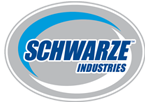The more routine a job becomes, the easier it is to forget safety concerns. We all must be reminded daily not to take safety for granted. Keep safety your top priority!
Accidents can usually be prevented and are many times the result of an unsafe act. Accidents in the workplace cost employers millions of dollars a year, which in turn cost the employee. It’s all connected; zero accidents can help reduce the cost of insurance and workers comp, thus reducing expenses and increasing profits leaving more money for the employer and employees. It’s important to make safety the first part of your daily meetings. Talk about near-misses openly using them as a teaching tool so that potential hazards, can be corrected.
Make sure that your sweeper is safe, that you are safe while servicing the machine and operate it safely. You are the key to safety. Read, understand and follow your equipment’s operator’s manual instructions, warnings and safety messages. Good safety practices not only protect you but also the people around you. It should be your responsibility to check the operating condition of all systems. If unsafe conditions are found, the ignition key should be removed from the unit and a sign or tag placed on the controls stating “DO NOT OPERATE.” And always report condition(s) for immediate repair.
The following is a list of just some of the items that should be maintained to keep your sweeper operating safely:
• Tire Pressure and Tread depth.
• Service and park brake operation.
• Directional, stop, safety and work lights are operational.
• Backup alarm is functional.
• Rear camera is clean and ready (If equipped).
• Mirrors are adjusted (Should be re-adjusted if driving side changes from left to right).
• All guards are in place.
• Water system or filter system is ready for a full day of sweeping.
• Fire extinguisher is accessible and charged.
• Windshield wipers and washer.
• Safety switches and interlocks are operational.
• Undercarriage, exhaust system(s) and engine compartment(s) are free of debris.
If the sweeper requires servicing, be sure to practice safety by removing the key(s) from the equipment before starting any work. Follow the equipment company’s procedures for proper and safe servicing of the machine. If ever in doubt, contact your supervisor or the manufacturer with questions or concerns. Never work on a machine while it is running or when it could be started accidentally. Place safety chocks or props under raised hoppers or lifts anytime someone could get underneath them. Never run hands along hydraulic or high-pressure hoses searching for leaks. Fluid under pressure can penetrate the skin or eyes and cause injury, blindness or death. Fluid injected into the skin must be removed immediately, seek medical attention. Never remove a hydraulic or pneumatic cylinder from the machine while under a load or while it is pressurized. Do not wear loose clothing, dangling ties, long hair or jewelry while servicing the equipment.
The operation of the sweeper requires additional safety guidelines and again be sure to follow equipment manufacturer’s operator’s manual. Wear appropriate PPE (Personal Protection Equipment), such as a reflective vest, steel toe shoes, and gloves when needed. Always wear your seat belt and follow local traffic regulations when driving truck. Be aware that most sweeper’s center of gravity or CG changes as it loads with debris or unloads water. The CG can also affect the travel speed on curves and uneven surfaces and the stopping distance of the sweeper. Also, monitor dust suppression systems to make sure they are performing sufficiently to prevent accidents to bystanders or surrounding traffic from fugitive dust.
Here are a few more items to keep in mind while operating a sweeper:
• Know the height of your machine and avoid overhead clearance hazards.
• Look out for bystanders around and behind the sweeper, use mirrors and rear view camera.
• Never use drugs or alcohol while operating equipment. Even over the counter drugs can have adverse side effects.
• Do not exceed operating speed for the chassis or auxiliary engine.
• Never sweep debris larger that the intake or that machine is capable of picking up.
• Use extreme caution when backing up, vision may be limited, severe damage or injury can occur.
• Do not run engines in enclosed building without proper exhaust ventilation.
• Turn on flashing warning lights when operating the machine or traveling slower than traffic.
• Always wear OSHA approved Personal Protective Equipment (PPE) while operating, servicing, repairing or cleaning the sweeper. PPE is designed to provide physical protection for such activities. Personal Protective Equipment includes:
o Protective eyewear.
o Steel safety toes footwear.
o Gloves.
o Hearing protection.
o Close fitted clothing.
o Hard hat (When working around a raised hopper.)
o Respirator (Depending on conditions and material being swept or cleaned.)
o Specialized PPE may be required if hazardous material is being swept or cleaned from the sweeper.
Though this article doesn’t cover every safety item and situation, I hope that it helps move you forward to a safer 2016. Here are a couple of websites that might help:
https://www.osha.gov/SLTC/etools/safetyhealth/mod2_sample_sh_program.html
https://www.aem.org/SRT/Safety/

